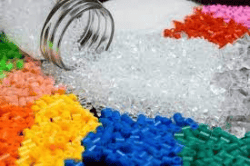Rubber is an incredibly versatile material that is used in a variety of industrial applications. It’s used in everything from rubber car tyres to commercial roofing. There are many procedures that rubber goes through to reach its final form. There are two main types of rubber: natural and synthetic. Natural rubber is obtained from rubber trees in nature. The sap is collected from the bark of rubber trees and flows into collection tanks.
The chemical industry produces a variety of rubber products for different applications. Rubber is a common compound used in almost all of the processes in the chemical industry. Most chemical plants contain corrosive reagents that can harm or corrode rubber. In order to keep the process safe, hard rubber with a high sulphur content is used. Many lab tests have been conducted with hard rubber in various chemical processes.
Rubber compounds are created by mixing a variety of additives with raw rubber. These chemicals can be crosslinking agents, reinforcements, antidegradants, or colourants. The purpose of the crosslinking agents is to improve the elasticity of the elastomer. When an elastomer is unformulated, it has a low molecular weight and low elasticity. The process of compounding improves its mechanical properties and abrasion resistance. Find out more about Rubber Moulding UK by going to a site like www.meadex.co.uk/rubber-moulding
The rubber compound is then cured in an autoclave. After this process, the compound passes to milling machines, which thoroughly mix the rubber compound and ensure that all of its chemical constituents are evenly dispersed. However, these machines produce a considerable amount of heat and vapours, and mill operators must protect themselves from the fumes produced.
The quest to create synthetic alternatives of natural substances has been a long-standing challenge for chemists. In the 1800s, natural rubber stocks were dwindling and a committee was formed to find a solution.
Rubber processing wastewater contains nitrogen and ammonia, which can contaminate water and cause the death of aquatic animals. Because of the dangers of these chemicals, several regulatory bodies have strict regulations on their use. In addition to the risk of water pollution, rubber processing wastewater also produces methanol, styrene, and toluene. These chemicals are considered hazardous in the air and can lead to chronic disorders.
There is a significant amount of wastewater generated during rubber processing. This wastewater has been linked to serious health risks and has even been linked to excess deaths due to cancer. Luckily, there are some regulatory bodies in place to protect workers from this pollution. But there is still no conclusive research to prove that there is a direct connection between occupational exposure and the risk of cancer.


